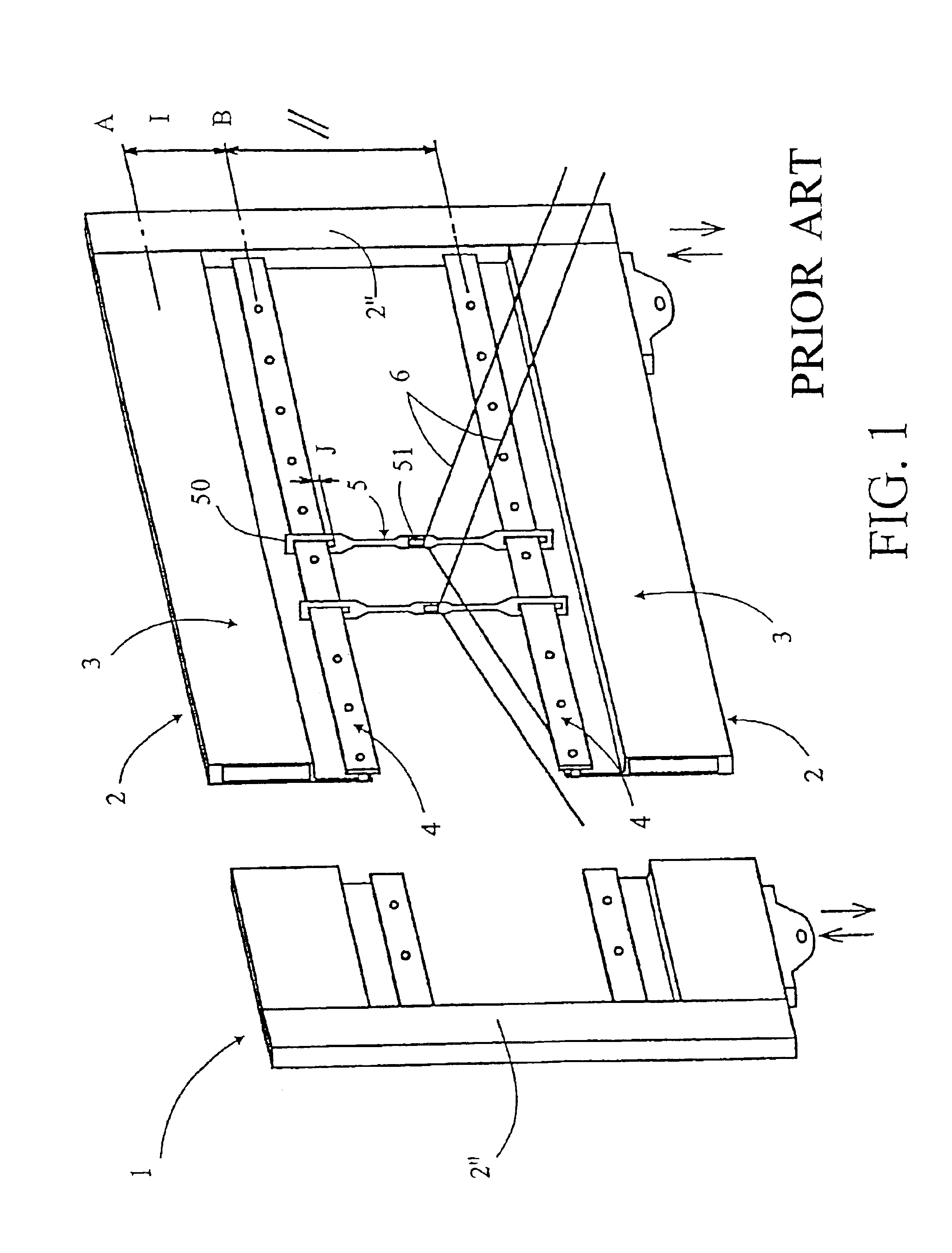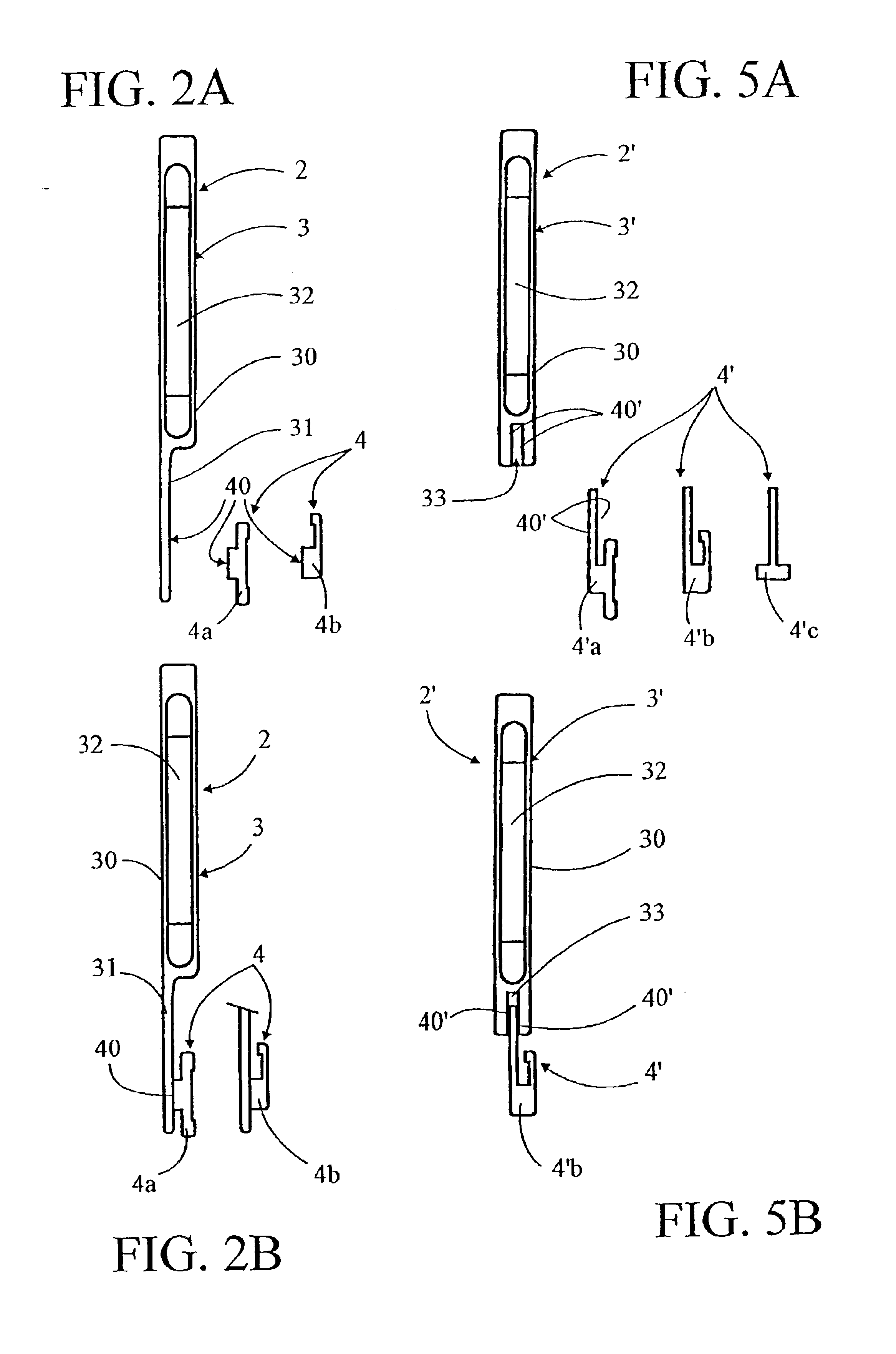Method for manufacturing a crossbeam for a heddle frame of a loom and crossbeam obtained by said method
a technology which is applied in the field of manufacturing a crossbeam or slat for a heddle frame of a loom, and a crossbeam obtained by said method, can solve the problems of new mechanical behavior and technical difficulties of heddle frame and loom heddle, low resistance to mechanical fatigue, and the heddle-support rod is not necessarily linear, etc., to achieve low cost, high rigidity, and low cost.
- Summary
- Abstract
- Description
- Claims
- Application Information
AI Technical Summary
Benefits of technology
Problems solved by technology
Method used
Image
Examples
Embodiment Construction
[0037]The particulars shown herein are by way of example and for purposes of illustrative discussion of the embodiments of the present invention only and are presented in the cause of providing what is believed to be the most useful and readily understood description of the principles and conceptual aspects of the present invention. In this regard, no attempt is made to show structural details of the present invention in more detail than is necessary for the fundamental understanding of the present invention, the description taken with the drawings making apparent to those skilled in the art how the several forms of the present invention may be embodied in practice.
[0038]With reference to the Figures, the invention relates to a method for manufacturing a crossbeam 2, 2′ for the heddle frame 1 of a loom, and a crossbeam 2, 2′ obtained by this method.
[0039]An example of a conventional heddle frame 1 for a loom is shown in FIG. 1. As known, it has two substantially parallel crossbeams ...
PUM
 Login to View More
Login to View More Abstract
Description
Claims
Application Information
 Login to View More
Login to View More - R&D
- Intellectual Property
- Life Sciences
- Materials
- Tech Scout
- Unparalleled Data Quality
- Higher Quality Content
- 60% Fewer Hallucinations
Browse by: Latest US Patents, China's latest patents, Technical Efficacy Thesaurus, Application Domain, Technology Topic, Popular Technical Reports.
© 2025 PatSnap. All rights reserved.Legal|Privacy policy|Modern Slavery Act Transparency Statement|Sitemap|About US| Contact US: help@patsnap.com



